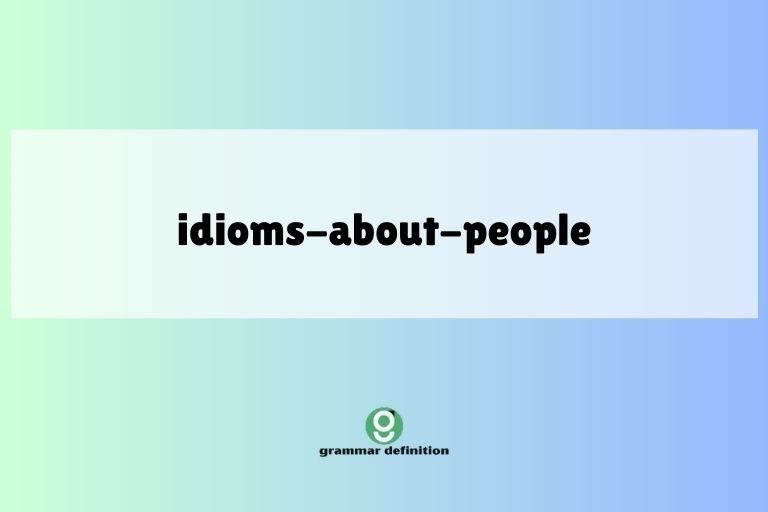Idioms for Success: Mastering Figurative Language in Business

Idioms are colorful expressions that add depth and nuance to the English language. Understanding and using idioms effectively is crucial for anyone aiming for success in professional settings.
This article provides a comprehensive guide to idioms related to success, covering their definitions, usage, and common pitfalls. Whether you’re a student, a professional, or simply an English language enthusiast, this guide will equip you with the knowledge and skills to confidently navigate the world of idioms and enhance your communication prowess.
Mastering idioms not only enriches your vocabulary but also helps you grasp the subtle undertones of conversations and written materials. In business, where clear and persuasive communication is paramount, a strong command of idioms can significantly boost your credibility and effectiveness.
This article aims to make the learning process engaging and accessible, providing numerous examples and practice exercises to solidify your understanding.
Table of Contents
- Introduction
- Definition of Idioms for Success
- Structural Breakdown of Idioms
- Types and Categories of Success Idioms
- Examples of Idioms for Success
- Usage Rules for Idioms
- Common Mistakes with Idioms
- Practice Exercises
- Advanced Topics in Idiom Usage
- Frequently Asked Questions
- Conclusion
Definition of Idioms for Success
An idiom is a phrase or expression whose meaning cannot be understood from the literal meanings of its individual words. Instead, it has a figurative meaning that is known through common usage.
Idioms related to success, specifically, are phrases that describe achieving goals, overcoming obstacles, and excelling in various endeavors. These idioms often draw on metaphors and analogies to convey complex ideas in a concise and memorable way.
Understanding these idioms is crucial for comprehending nuanced communication in both spoken and written English, especially within professional contexts.
Idioms function as a type of figurative language, adding color and depth to communication. They can be classified based on their structure (e.g., phrasal verbs, proverbs, clichés) and their thematic content (e.g., idioms about hard work, perseverance, luck).
The context in which an idiom is used is vital for accurate interpretation, as the same phrase can have different meanings in different situations. Recognizing and using idioms correctly can greatly enhance your communication skills and make you sound more natural and fluent.
Classification of Idioms
Idioms can be classified in various ways based on their structure and meaning. Some common classifications include:
- Phrasal Verbs: Combinations of verbs and prepositions or adverbs that have idiomatic meanings (e.g., “to pull off” meaning to succeed).
- Proverbs: Short, well-known sayings that express a general truth or piece of advice (e.g., “Where there’s a will, there’s a way.”).
- Clichés: Overused idioms that have lost their impact but are still commonly used (e.g., “Think outside the box.”).
- Conceptual Metaphors: Idioms that are based on underlying metaphorical concepts (e.g., “Time is money”, leading to idioms like “invest time”).
Function of Idioms
Idioms serve several important functions in communication:
- Conciseness: They can convey complex ideas in a few words.
- Emphasis: They can add emphasis and emotion to a statement.
- Cultural Understanding: They reflect cultural values and beliefs.
- Engagement: They can make communication more engaging and memorable.
Context of Idioms
The context in which an idiom is used is crucial for accurate interpretation. Consider the following:
- Situation: The specific circumstances of the communication.
- Speaker: The background and intentions of the speaker.
- Audience: The knowledge and expectations of the audience.
Structural Breakdown of Idioms
Understanding the structure of idioms is essential for recognizing and using them correctly. Unlike literal phrases, idioms cannot be interpreted by simply adding up the meanings of their individual words.
Instead, they function as a single unit with a distinct figurative meaning. This section explores the structural elements and patterns that characterize idioms.
Idioms often involve metaphorical language, where one concept is understood in terms of another. For example, the idiom “hit the ground running” uses the metaphor of running to describe starting a task with great energy and efficiency.
The structural patterns of idioms can vary, including phrases, clauses, and even complete sentences. However, they all share the characteristic of having a non-literal meaning that is established through common usage.
Metaphorical Language in Idioms
Metaphorical language is a key element in many idioms. It involves using one concept to understand another, creating a figurative meaning that goes beyond the literal.
For example:
- “To go the extra mile”: This idiom uses the metaphor of physical distance to describe putting in extra effort.
- “To break the ice”: This idiom uses the metaphor of breaking ice to describe making a start in a social situation.
Structural Patterns of Idioms
Idioms can follow various structural patterns, including:
- Phrases: Short groups of words that form a single unit of meaning (e.g., “a piece of cake”).
- Clauses: Groups of words containing a subject and a verb (e.g., “to bite off more than you can chew”).
- Sentences: Complete statements that express a thought or idea (e.g., “When it rains, it pours.”).
Non-Literal Meaning
The defining characteristic of idioms is their non-literal meaning. This means that the meaning of the idiom cannot be derived from the literal meanings of its individual words. Instead, the idiom has a figurative meaning that is established through common usage. For example, the idiom “to call it a day” does not literally mean to name the current 24-hour period; it means to stop working on something.
Types and Categories of Success Idioms
Idioms related to success can be categorized based on the specific aspects of success they describe. This section explores different types of success idioms, including those related to hard work, perseverance, luck, and achievement.
Understanding these categories can help you choose the most appropriate idiom to convey your intended meaning. For example, if you want to describe the importance of hard work, you might use idioms like “burn the midnight oil” or “go the extra mile.” If you want to emphasize the role of luck, you might use idioms like “beginner’s luck” or “strike gold.” By understanding the nuances of each category, you can use idioms more effectively and precisely.
Idioms Related to Hard Work
These idioms emphasize the importance of effort and dedication in achieving success. They often involve metaphors of physical labor or intense activity.
- Burn the midnight oil: Work late into the night.
- Go the extra mile: Put in extra effort.
- Keep your nose to the grindstone: Work hard and diligently.
- Sweat blood: Work extremely hard.
Idioms Related to Perseverance
These idioms highlight the importance of persistence and determination in overcoming obstacles and achieving long-term goals. They often involve metaphors of resilience and endurance.
- Hang in there: Don’t give up.
- Keep at it: Continue working hard.
- Stay the course: Continue on the same path.
- When the going gets tough, the tough get going: Strong people rise to meet challenges.
Idioms Related to Luck
These idioms acknowledge the role of chance and good fortune in achieving success. They often involve metaphors of gambling or unexpected gains.
- Beginner’s luck: Success achieved by a novice due to chance.
- Strike gold: Discover something valuable or have a great success.
- Hit the jackpot: Have a big success or win a large prize.
- Lady luck is on your side: You are experiencing good fortune.
Idioms Related to Achievement
These idioms describe the feeling of accomplishment and the satisfaction of reaching a goal. They often involve metaphors of victory and celebration.
- Hit the bullseye: Achieve a goal perfectly.
- Reach for the stars: Aim for ambitious goals.
- Take the cake: Be the most successful or outstanding.
- Come out on top: Be victorious or successful.
Examples of Idioms for Success
This section provides a wide range of examples of idioms related to success, organized by category. Each example is accompanied by a definition and a sample sentence to illustrate its usage.
Understanding these examples will help you recognize and use idioms correctly in various contexts.
The tables below offer a comprehensive overview of idioms related to hard work, perseverance, luck, and achievement. Each table includes at least 20-30 examples, providing a rich resource for learning and practicing idiom usage.
By studying these examples, you can develop a deeper understanding of the nuances of English idioms and enhance your communication skills.
Examples of Hard Work Idioms
The following table provides examples of idioms related to hard work, along with their definitions and example sentences.
| Idiom | Definition | Example Sentence |
|---|---|---|
| Burn the midnight oil | Work late into the night | She had to burn the midnight oil to finish the project on time. |
| Go the extra mile | Put in extra effort | He always goes the extra mile to ensure customer satisfaction. |
| Keep your nose to the grindstone | Work hard and diligently | If you want to succeed, you need to keep your nose to the grindstone. |
| Sweat blood | Work extremely hard | They sweated blood to get the company off the ground. |
| Work your fingers to the bone | Work extremely hard | She worked her fingers to the bone to provide for her family. |
| Be a workaholic | Someone who is addicted to working | He is a workaholic and often stays late at the office. |
| Be up to your ears in work | To be very busy | I’m up to my ears in work this week, so I can’t take on any new projects. |
| Plough through something | To finish something even though it is difficult | I had to plough through a lot of paperwork to get the deal done. |
| Hammer away at something | To work hard and consistently | They hammered away at the problem until they found a solution. |
| Get stuck in | To start doing something with enthusiasm | We need to get stuck in and start working on this project. |
| Pull your weight | To do your fair share of work | Everyone needs to pull their weight to ensure the project is successful. |
| Slave away | To work very hard with little reward | He slaved away at the factory for many years. |
| Be snowed under | To have too much work to deal with | I’m snowed under with emails and reports this week. |
| Put your shoulder to the wheel | To work hard | If we all put our shoulder to the wheel, we can finish this project on time. |
| Go all out | To put maximum effort into something | They went all out to make the event a success. |
| Be on the go | To be constantly busy | She is always on the go, juggling multiple projects at once. |
| Be a busy bee | To be very active and hard-working | He is a busy bee, always working on something. |
| Be a glutton for work | Someone who enjoys working hard | She is a glutton for work and always volunteers for extra tasks. |
| Work like a dog | To work very hard | He works like a dog to support his family. |
| Be on the treadmill | To be stuck in a routine of hard work | I feel like I’m on the treadmill, just going through the motions every day. |
| Go into overdrive | To work at an increased rate | We had to go into overdrive to meet the deadline. |
| Be a human dynamo | To be full of energy and hard-working | She is a human dynamo, always coming up with new ideas and projects. |
| Be a powerhouse | To be a strong and effective worker | He is a powerhouse in the company, always getting things done. |
Examples of Perseverance Idioms
The following table provides examples of idioms related to perseverance, along with their definitions and example sentences.
| Idiom | Definition | Example Sentence |
|---|---|---|
| Hang in there | Don’t give up | Hang in there, things will get better. |
| Keep at it | Continue working hard | If you keep at it, you’ll eventually succeed. |
| Stay the course | Continue on the same path | We need to stay the course and not be distracted by setbacks. |
| When the going gets tough, the tough get going | Strong people rise to meet challenges | When the going gets tough, the tough get going, and that’s exactly what we need to do. |
| Never say die | Never give up | He never says die, even when things look impossible. |
| Keep your chin up | Stay positive and hopeful | Keep your chin up, things will work out in the end. |
| Hold your head high | Remain confident and proud | Hold your head high, you’ve done nothing wrong. |
| Weather the storm | Survive a difficult period | We need to weather the storm and come out stronger on the other side. |
| Ride out the storm | Endure a difficult situation until it passes | The company is trying to ride out the storm of the economic downturn. |
| Keep the faith | Maintain hope and belief | Keep the faith, things will eventually improve. |
| Press on | Continue despite difficulties | We need to press on and not let obstacles stop us. |
| Persevere | Continue despite difficulties | Despite the setbacks, they persevered and achieved their goal. |
| Stick to your guns | Stand firm on your beliefs | He stuck to his guns and refused to compromise. |
| Stand your ground | Defend your position | She stood her ground and refused to back down. |
| Hang tough | Remain strong and determined | We need to hang tough and not give in to pressure. |
| Plod on | Continue steadily despite difficulties | They plodded on, slowly but surely making progress. |
| Tough it out | Endure a difficult situation | We just need to tough it out until things improve. |
| Bite the bullet | Endure a painful or unpleasant situation with courage | We had to bite the bullet and accept the pay cut. |
| Keep plugging away | Continue working steadily | He just kept plugging away until he finished the project. |
| Rise above | Overcome a difficult situation | We need to rise above the negativity and focus on our goals. |
| Come through | Succeed in a difficult situation | They came through despite all the challenges they faced. |
| Turn the corner | Reach a turning point and start to improve | The company has finally turned the corner and is now profitable. |
| See the light at the end of the tunnel | See signs of improvement after a difficult period | We are finally seeing the light at the end of the tunnel after months of hard work. |
Examples of Luck Idioms
The following table provides examples of idioms related to luck, along with their definitions and example sentences.
| Idiom | Definition | Example Sentence |
|---|---|---|
| Beginner’s luck | Success achieved by a novice due to chance | It was just beginner’s luck that she won the first game. |
| Strike gold | Discover something valuable or have a great success | They struck gold with their new product launch. |
| Hit the jackpot | Have a big success or win a large prize | He hit the jackpot when he won the lottery. |
| Lady luck is on your side | You are experiencing good fortune | Lady luck is on your side today – you won two prizes! |
| In the right place at the right time | Being present when something fortunate happens | He was in the right place at the right time to get the job offer. |
| A stroke of luck | A sudden piece of good fortune | It was a stroke of luck that we found the missing documents. |
| Fall into something | Get something unexpectedly | He fell into the job after a chance encounter. |
| Come up smelling of roses | Emerge from a difficult situation with your reputation intact | Despite the scandal, he came up smelling of roses. |
| Have a charmed life | To seem to always be lucky | She seems to have a charmed life – everything always works out for her. |
| Get a lucky break | To receive a piece of good fortune | He got a lucky break when he met the CEO at the conference. |
| Cash in on | To profit from a situation | They cashed in on the popularity of the new trend. |
| Come into a fortune | To inherit a large sum of money | He came into a fortune after his grandfather passed away. |
| Win big | To have a great success | The company won big with their new product launch. |
| Have all the luck | To be very fortunate | She seems to have all the luck – everything goes her way. |
| Against all odds | Despite facing many challenges | Against all odds, they managed to win the championship. |
| By a fluke | By chance or accident | He won the game by a fluke. |
| Have a golden touch | To be successful in everything you do | She seems to have a golden touch – every business she starts is a success. |
| Have a rabbit’s foot | To be lucky | He must have a rabbit’s foot – he always wins. |
| Chance your arm | To take a risk | He decided to chance his arm and invest in the new venture. |
| Stick or twist | To continue with a plan or change it | It’s a case of stick or twist – do we continue with the project or abandon it? |
| Stake your claim | To assert your right to something | They staked their claim to the new territory. |
| Fortune smiles on you | To be lucky | Fortune smiles on you today! |
| Be born with a silver spoon in your mouth | To be born into wealth and privilege | He was born with a silver spoon in his mouth and never had to work a day in his life. |
Examples of Achievement Idioms
The following table provides examples of idioms related to achievement, along with their definitions and example sentences.
| Idiom | Definition | Example Sentence |
|---|---|---|
| Hit the bullseye | Achieve a goal perfectly | They hit the bullseye with their marketing campaign. |
| Reach for the stars | Aim for ambitious goals | You should always reach for the stars and strive for greatness. |
| Take the cake | Be the most successful or outstanding | Her performance took the cake – it was the best of the night. |
| Come out on top | Be victorious or successful | Despite the challenges, they came out on top. |
| Go places | Be successful in the future | He is a talented young man and will go places in his career. |
| Make it big | Become very successful | She dreamed of making it big in Hollywood. |
| Be a success story | To be successful | His journey from humble beginnings is a true success story. |
| Be on top of the world | To feel extremely happy and successful | After winning the championship, they were on top of the world. |
| Make your mark | To have a significant impact | He wants to make his mark on the world through his inventions. |
| Climb the ladder | To advance in a career | She worked hard to climb the ladder in the company. |
| Breakthrough | A sudden advance or discovery | The scientists made a major breakthrough in cancer research. |
| Go from strength to strength | To become increasingly successful | The company has been going from strength to strength in recent years. |
| Achieve your potential | To reach your full capabilities | He is determined to achieve his potential in his chosen field. |
| Realize your dreams | To make your dreams come true | She finally realized her dreams of becoming a doctor. |
| Reach the top | To achieve the highest level of success | He worked tirelessly to reach the top of his profession. |
| Be a winner | To be successful | He has a winning attitude and is always a winner. |
| Carry the day | To win or succeed | Their team carried the day in the final competition. |
| Get ahead | To make progress and be successful | He is determined to get ahead in his career. |
| Go far | To be very successful | She is a talented musician and will go far in her career. |
| Make headway | To make progress | They are making headway on the construction project. |
| Pass with flying colors | To succeed easily | She passed the exam with flying colors. |
| Set the world on fire | To be very successful and make a big impact | He is determined to set the world on fire with his new invention. |
| Top of the heap | The most successful person or thing | He is now at the top of the heap in his industry. |
Usage Rules for Idioms
Using idioms correctly requires an understanding of their specific meanings and the contexts in which they are appropriate. This section outlines the key rules for using idioms effectively, including considerations for formality, audience, and cultural sensitivity.
One of the most important rules is to avoid using idioms in overly formal or technical writing, where precise and literal language is preferred. Additionally, it’s crucial to be aware of your audience and choose idioms that they are likely to understand.
Using unfamiliar idioms can confuse or alienate your audience. Finally, be mindful of cultural differences, as some idioms may have different meanings or be considered offensive in other cultures.
Formality of Idioms
The level of formality should be considered when using idioms. Some idioms are more appropriate for informal conversations, while others are suitable for professional settings.
Avoid using overly casual idioms in formal presentations or written reports.
Audience Awareness
Consider your audience when choosing idioms. Ensure that your audience is familiar with the idioms you use.
If you are speaking to an international audience, it may be best to avoid idioms altogether or to explain them clearly.
Cultural Sensitivity
Be aware of cultural differences when using idioms. Some idioms may have different meanings or be considered offensive in other cultures.
It is always best to err on the side of caution and avoid using idioms that may be misinterpreted or cause offense.
Literal vs. Figurative Meaning
Always remember idioms have a figurative meaning, not a literal one. Do not attempt to interpret an idiom by examining the individual meanings of its words.
Common Mistakes with Idioms
One of the most common mistakes with idioms is misinterpreting their meaning. Because idioms have a non-literal meaning, it’s easy to misunderstand them if you’re not familiar with their correct usage.
Another common mistake is using idioms inappropriately in formal contexts. Idioms are generally more suitable for informal conversations and less appropriate for formal writing or presentations.
Additionally, many learners make errors by altering the standard wording of an idiom, which can change its meaning or make it nonsensical.
To avoid these mistakes, it’s important to study idioms in context, pay attention to their specific meanings, and practice using them correctly. When in doubt, it’s always better to use clear, literal language rather than risking misusing an idiom.
The table below illustrates some common mistakes and provides the correct alternatives.
| Incorrect | Correct | Explanation |
|---|---|---|
| He burned the midnight oil too much. | He burned the midnight oil. | “Too much” is redundant. The idiom already implies a significant effort. |
| She went an extra mile. | She went the extra mile. | The correct phrase is “the extra mile,” implying a specific additional effort. |
| Keep your nose on the grindstone. | Keep your nose to the grindstone. | The correct preposition is “to,” not “on.” |
| They sweated bloods to finish. | They sweated blood to finish. | “Blood” is uncountable, so it doesn’t take a plural form. |
| Hang in there tight. | Hang in there. | “Tight” is redundant. The idiom already implies holding on firmly. |
| Keep at it on. | Keep at it. | The “on” is unnecessary and incorrect. |
| Stay the path. | Stay the course. | The correct phrase is “stay the course,” referring to a specific direction. |
| When the going gets rough, the rough get going. | When the going gets tough, the tough get going. | The correct word is “tough”, not “rough”. |
| Lady luck is by your side. | Lady luck is on your side. | The correct preposition is “on,” not “by.” |
| He stroke gold with his new product. | He struck gold with his new product. | The correct verb is “struck”, the past tense of “strike”. |
Practice Exercises
These practice exercises will help you reinforce your understanding of idioms related to success. Each exercise consists of 10 questions, and the answers are provided at the end of the section.
By completing these exercises, you can assess your knowledge and identify areas where you need further practice.
The exercises include a variety of question types, such as multiple choice, fill-in-the-blank, and sentence completion. These exercises are designed to test your ability to recognize idioms, understand their meanings, and use them correctly in context.
Make sure to review the examples and usage rules before attempting the exercises.
Exercise 1: Multiple Choice
Choose the best answer to complete each sentence.
| Question | Options | Answer | |
|---|---|---|---|
| 1. She had to ______ to finish the project on time. | (a) burn the midnight candle (b) burn the midnight oil (c) burn the midnight gas (d) burn the midnight fire | (b) | |
| 2. He always ______ to ensure customer satisfaction. | (a) goes the extra step (b) goes the extra mile (c) goes the extra inch (d) goes the extra yard | (b) | |
| 3. If you want to succeed, you need to ______. | (a) keep your nose on the grindstone (b) keep your nose to the grindstone (c) keep your nose at the grindstone (d) keep your nose by the grindstone | (b) | |
| 4. They ______ to get the company off the ground. | (a) sweated tears (b) sweated water (c) sweated blood (d) sweated juice | (c) | |
| 5. ______, things will get better. | (a) Hang in there (b) Hang on there (c) Hang up there (d) Hang out there | (a) | |
| 6. If you ______, you’ll eventually succeed. | (a) keep at it (b) keep on it (c) keep in it (d) keep by it | (a) | |
| 7. We need to ______ and not be distracted by setbacks. | (a | (a) stay the road (b) stay the path (c) stay the course (d) stay the lane | (c) |
| 8. ______, and that’s exactly what we need to do. | (a) When the tough gets going, the tough get going (b) When the going gets tough, the tough get going (c) When the rough gets going, the rough get going (d) When the tough gets going, the rough get going | (b) | |
| 9. It was just ______ that she won the first game. | (a) beginner’s wish (b) beginner’s hope (c) beginner’s dream (d) beginner’s luck | (d) | |
| 10. They ______ with their new product launch. | (a) struck silver (b) struck bronze (c) struck gold (d) struck lead | (c) |
Exercise 2: Fill-in-the-Blank
Complete each sentence with the correct idiom.
| Question | Answer |
|---|---|
| 1. He ______ when he won the lottery. | hit the jackpot |
| 2. You should always ______ and strive for greatness. | reach for the stars |
| 3. Her performance ______ – it was the best of the night. | took the cake |
| 4. Despite the challenges, they ______. | came out on top |
| 5. He is a talented young man and will ______ in his career. | go places |
| 6. She dreamed of ______ in Hollywood. | making it big |
| 7. His journey from humble beginnings is a true ______. | success story |
| 8. After winning the championship, they were ______. | on top of the world |
| 9. He wants to ______ on the world through his inventions. | make his mark |
| 10. She worked hard to ______ in the company. | climb the ladder |
Exercise 3: Sentence Completion
Complete each sentence with a relevant idiom to make it meaningful.
| Question | Answer |
|---|---|
| 1. Despite facing numerous setbacks, the team decided to ______. | stay the course |
| 2. To ensure the project’s success, everyone must ______. | pull their weight |
| 3. After months of hard work, we are finally ______. | seeing the light at the end of the tunnel |
| 4. The entrepreneur ______ when his innovative startup took off. | struck gold |
| 5. Despite the initial failures, she refused to ______. | never say die |
| 6. As the deadline approached, the team had to ______. | burn the midnight oil |
| 7. She ______ by consistently exceeding expectations. | went the extra mile |
| 8. The company ______ after implementing the new strategies. | turned the corner |
| 9. In the face of adversity, it’s important to ______. | keep your chin up |
| 10. He ______ and secured the lucrative deal. | carried the day |
Advanced Topics in Idiom Usage
Beyond basic understanding and usage, there are advanced aspects of idioms that can further enhance your communication skills. This section explores these advanced topics, including idiom variation, creative idiom usage, and the use of idioms in persuasive communication.
Idiom variation involves understanding how idioms can be slightly altered to fit different contexts while still retaining their basic meaning. Creative idiom usage involves using idioms in novel and imaginative ways to add flair to your communication.
The use of idioms in persuasive communication involves strategically using idioms to make your arguments more compelling and memorable. Mastering these advanced topics will enable you to use idioms with greater confidence and sophistication.
Idiom Variation
Idioms are not always fixed expressions and can sometimes be varied to fit different contexts. However, it’s important to be careful when varying idioms, as too much alteration can change their meaning or make them nonsensical.
Some common types of idiom variation include:
- Tense changes: Adjusting the tense of the verbs in an idiom to match the time frame of the sentence (e.g., “He has gone the extra mile”).
- Pronoun changes: Changing the pronouns in an idiom to match the subject of the sentence (e.g., “I need to pull my weight”).
- Adjective/adverb modification: Adding adjectives or adverbs to emphasize certain aspects of the idiom (e.g., “He really went the extra mile”).
Creative Idiom Usage
Idioms can be used creatively to add flair and originality to your communication. This involves using idioms in novel and imaginative ways, such as:
- Combining idioms: Blending two or more idioms to create a new, hybrid expression (e.g., “He burned the midnight oil to hit the bullseye”).
- Twisting idioms: Altering an idiom slightly to create a humorous or ironic effect (e.g., “She didn’t just go the extra mile, she went the extra marathon”).
- Extending metaphors: Developing the metaphorical imagery of an idiom to create a more vivid and detailed picture (e.g., “He didn’t just strike gold, he discovered a whole new gold mine”).
Idioms in Persuasive Communication
Idioms can be powerful tools in persuasive communication, helping to make your arguments more compelling and memorable. To use idioms effectively in persuasive communication, consider the following:
- Target your audience: Choose idioms that resonate with your audience’s values and beliefs.
- Use vivid imagery: Select idioms that create strong mental images and evoke emotions.
- Emphasize key points: Use idioms to highlight the most important aspects of your argument.
Frequently Asked Questions
Q: Why is it important to learn idioms?
A: Learning idioms is important because they are commonly used in everyday conversation and writing. Understanding idioms helps you comprehend the intended meaning of messages and enhances your ability to communicate effectively.
Q: Are idioms the same in all cultures?
A: No, idioms are not the same in all cultures. They are often specific to a particular language or culture, and their meanings may not translate directly to other languages.
Q: Can I use idioms in formal writing?
A: It depends on the context. While idioms can add color and emphasis to your writing, they may not be appropriate for overly formal or technical documents.
Consider your audience and the purpose of your writing when deciding whether to use idioms.
Q: How can I improve my understanding of idioms?
A: You can improve your understanding of idioms by reading widely, listening to native speakers, and studying idiom lists and dictionaries. Practice using idioms in your own writing and speaking to reinforce your learning.
Q: What should I do if I don’t understand an idiom?
A: If you don’t understand an idiom, try to ask for clarification from the speaker or writer. You can also look up the idiom in a dictionary or online resource to find its meaning.
Conclusion
Mastering idioms related to success is an invaluable asset for anyone looking to enhance their communication skills and achieve their goals. By understanding the definitions, structures, and usage rules of these colorful expressions, you can add depth and nuance to your language, making your communication more engaging and effective.
Whether you’re navigating the complexities of the business world or simply striving for personal growth, a strong command of idioms will undoubtedly give you a competitive edge.
Continue to practice and expand your knowledge of idioms, and you’ll find that your ability to communicate with clarity, confidence, and impact will grow exponentially. Remember, idioms are not just words; they are windows into the cultural and linguistic richness of the English language.
Embrace them, and you’ll unlock new levels of understanding and expression.






